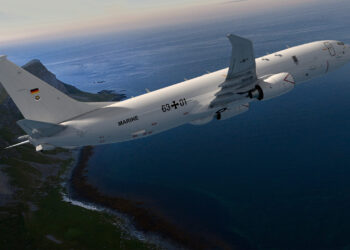UK Ministry of Defence,
Following a year-long refit, HMS St Albans is ready to take to the water again for sea trials which will put the multi million pound raft of upgrades through their paces.
This work included some significant firsts for a Type 23 at Rosyth; challenges which saw industry and MOD teams come together to answer promptly and successfully.
The MOD contract, worth around £10M, engaged Babcock Marine in Rosyth on the ship’s year long docking period which included:
— installing the Sonar 2087 – enabling the ships to detect the much quieter modern submarines that operate in inshore waters;
— mounting a new Defence Information Infrastructure communications system; — updates to the ship’s globalisation vent systems;
— fitting radial filters;
— the addition of a new 30mm automatic small calibre gun; and
— converting the ship’s aviation facilities to facilitate Merlin helicopters.
An extension to the scope of the original contract was negotiated to add yet further to the Type 23 frigate’s capabilities as a first class warship, which was turned around in rapid time.
Defence Equipment and Support’s Surface Combatants Director Commodore Graham Peach said:
“This was a significant work package which puts HMS St Albans, the newest of the Type 23s, at the forefront of the fleet of frigates.
“Babcock Marine has done a sterling job to deliver the significant additions to what was already a substantial package within a demanding schedule. We can be proud of the very constructive working relationship between the MOD and BM which has made this achievement possible.”
The refit contract was awarded to Babcock as part of the Surface Ship Support (SSS) project under which the MOD works with industry to allocate work packages to achieve affordable, sustainable support for the fleet.
Ready for Sea Date inspections were successfully completed on 30 May 08 and HMS St Albans will now embark upon six weeks of sea trials.
The Type 23 is the largest class of frigate constructed for the Royal Navy since the Leander class and provides the backbone of the Royal Navy’s anti-submarine frigate force.
Designed to carry out anti-submarine operations in the North Atlantic using towed array sonar to locate targets, they were the first ‘stealthy’ ships to enter service in the RN – equipped with electric motors they are able to cruise slowly and extremely quietly while hunting submarines and have a hull and superstructure angled off the vertical to reduce radar reflectivity.









